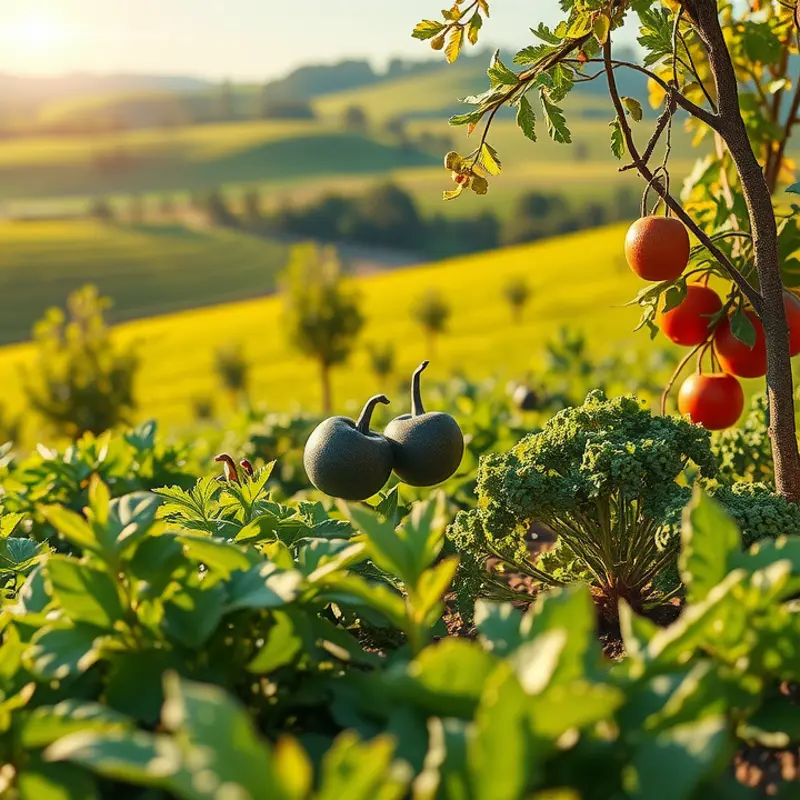Egypt’s culinary heritage is a tapestry woven from millennia of history, geographical diversity, and cultural richness. With each dish telling a story of the past, from the ancient civilizations that once thrived along the Nile to the modern-day fusion of global flavors, Egypt’s gastronomy is a celebration of community, tradition, and resilience. Food enthusiasts and culturally curious readers will find delight in exploring these unique culinary traditions while learning about the staple ingredients and beloved dishes that continue to capture hearts today.
Flavors Rooted in Tradition: An Overview of Egyptian Cuisine

Egyptian cuisine, with its rich historical lineage, is a tapestry woven from the threads of various cultures and eras. At the heart of this culinary heritage lies a staple ingredient—foul medames, or fava beans. These beans have nourished Egyptians since the time of the Pharaohs, forming the basis for meals that are both hearty and rich in protein.
Grains also feature prominently in the Egyptian diet, with bread being sacred. Aish baladi, a type of whole wheat bread, traces its origins back thousands of years. This simple yet substantial bread accompanies many Egyptian dishes, embodying the importance of wheat in the agricultural narrative of the region. The arid climate along the Nile is conducive to growing wheat and barley, which has been pivotal to Egypt’s sustenance since ancient times.
Legumes, grains, and vegetables intertwine with Egypt’s love for aromatic herbs and spices, including coriander, cumin, and mint. These flavors are not just ingredients but carriers of customs and traditions, creating a cuisine that is both bold and grounded in simplicity.
Historically, Egyptian cuisine has been shaped by a mosaic of influences. The agrarian practices along the fertile Nile, coupled with trade routes traversing the Mediterranean and Red Seas, introduced spices and cooking techniques from Africa, the Middle East, and Europe. These exchanges have left an indelible mark on Egyptian food, creating iconic dishes that are a testament to the country’s rich intercultural exchanges. For example, koshari, a comfort dish made from lentils, pasta, and rice, reflects the blend of flavors and cultures.
Meat and poultry play a lesser role but are cherished on special occasions. Beef and lamb are preferred choices, often skewered or stewed with vegetables, while chicken is cooked in traditional stews—simple yet flavorful, allowing the quality of the ingredients to shine through. Fish is commonly enjoyed along the Mediterranean coast, showcasing Egypt’s geographical access to bountiful waters.
One cannot explore Egyptian cuisine without acknowledging its revered street food. Whether it’s the ubiquitous falafel, known locally as ta’ameya, or the spicy blend of dakka sauce used for dipping, street food encapsulates the vibrancy and accessibility of Egyptian culinary culture.
As Egyptians move into contemporary times, there is a growing emphasis on sustainable and mindful eating practices that draw from ancient wisdom. This involves reducing food waste and maintaining nutritional adequacy, resonating with themes explored in global discussions on eco-smart kitchen storage source.
Thus, Egyptian cuisine today remains a living history, an artful blend of flavors that tell stories of conquest, trade, and resilience. Ingredients pass down through generations, enshrining culinary customs while adapting to new influences, ensuring that Egyptian tables continue to tell their timeless tales.
Iconic Dishes: Savoring the Authentic Flavors

Within the heart of Egyptian cuisine lies a selection of iconic dishes that reflect the country’s vast history. Among these, koshari stands out as a quintessential street food favorite. A delightful mix of lentils, rice, and pasta, topped with a spicy tomato sauce and crispy fried onions, koshari is believed to have evolved during the 19th century. Its affordability and nourishing qualities made it a staple among workers. Symbolizing the melting pot of cultural influences, koshari unites elements from Indian and Middle Eastern culinary traditions, epitomizing Egypt’s diverse past.
Molokhia, another iconic dish, offers a glimpse into ancient Egyptian food culture. Originating with the Pharaohs, this leafy green stew is made from jute leaves simmered in broth, typically served over rice or bread. The texture is silky and the flavor uniquely earthy, often enhanced with the aroma of garlic and cilantro. Molokhia’s preparation method varies across regions, illustrating the dish’s adaptability and the shared dining customs among communities. In some locales, rabbit, chicken, or lamb accompanies the stew, adding a protein-rich depth.
Then there is the art of preparing stuffed pigeon, a dish deeply rooted in Egyptian celebrations. Regarded as a delicacy, pigeons are usually reserved for special occasions. They are meticulously stuffed with a mixture of rice, spices, and sometimes, freekeh—a roasted green wheat that offers a nutty flavor. This dish not only reflects the importance of pigeons in Egypt’s historical agricultural practices but also highlights the communal joy of sharing a well-prepared meal.
The art of making these traditional dishes is often a communal affair, with families gathering in kitchens to prepare food together. This practice reinforces social bonds and preserves culinary heritage. Furthermore, such dishes emphasize sustainability by utilizing locally sourced ingredients. When engaging with Egyptian cuisine, one discovers stories of conquest, trade, and tradition subtly woven into each ingredient and technique, inviting a deeper appreciation of this ancient land’s heritage.
For those interested in exploring global culinary influences, uncovering how Egypt’s trade routes have shaped modern dishes could be insightful. Delve into culinary influences through trade to understand this interconnectedness.
Iconic Egyptian foods offer more than mere sustenance; they provide a sensory journey through time. Every bite of koshari, molokhia, or stuffed pigeon tells a story of a civilization that has thrived beside the fertile Nile banks for millennia. They are not just meals but imbibed memories, connecting people across generations and geographical boundaries.
Final words
Egypt’s culinary heritage is an exquisite celebration of its historical tapestry, each dish passed down through generations offers a flavor-rich connection to the past. The simplicity of ingredients paired with complex combinations and thoughtful preparation demonstrates both hospitality and cultural pride. As you explore these flavors—from the vibrant bustling markets of Cairo to family meals by the Nile—remember that every bite is an invitation to experience the warmth and tradition of Egyptian culture. Whether you’re attempting to recreate a dish or simply enjoying its tale, embracing this culinary history enriches the understanding of a nation’s soul.








